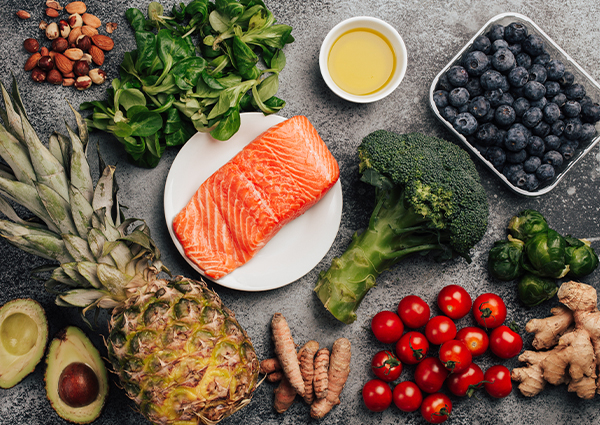
Control Pain with the Anti-Inflammatory Diet
Inflammation is how the body rids itself of perceived toxins and results in redness, puffiness, skin rashes, swelling of the hands and feet, abdominal bloating, fatigue, achy joints and muscles, weight gain, headaches, gastrointestinal trouble and the tendency to catch colds and flu that linger.
Food is a major contributor to inflammation. When you eat foods that are triggers, the microbiome in your gut becomes inflamed and sends signals to your central nervous system that begins the pain cycle in your body.
Worse yet, chronic low-grade inflammation can lead to:
- Hypertension
- Heart disease
- Diabetes
- Crohn’s disease
- Arthritis
- Alzheimer’s disease
- Certain cancers
- Fibromyalgia
- Obesity
- Depression
Eating an anti-inflammatory diet can help prevent these conditions, keep the conditions from worsening, or even reverse some issues. The converse is also true; eating inflammatory foods can cause chronic conditions. So it’s important to know what foods to embrace and which to avoid for your best health. And unlike many medications, an anti-inflammatory diet won’t have annoying or dangerous side effects like brain fog, memory and sleep issues or sedation.
Foods that Cause Inflammation
Some foods may bother one group of people and not another. Therefore, it’s important to pay attention to how different foods make you feel. Keeping a food diary helps you identify symptoms and link them to specific foods in your diet.
Everyone should avoid:
- Ultra-processed foods like packaged goodies, chips, hot dogs and similar “junk food”
- Greasy, fried foods
- Whole-fat dairy
- Red meat (eat infrequently and small portions)
- Refined grains
- Foods with a long list of ingredients
- Sugary drinks
Foods for an Anti-Inflammatory Diet
Consume a rainbow of foods, ensuring you get all the essential nutrients, such as:
- Fish at least twice a week, particularly salmon, tuna and other oily fish
- Cruciferous veggies like broccoli and cauliflower
- Whole grains
- Beans and lentils
- Low-fat dairy
- Nuts and seeds
- Green, leafy veggies
- Fruits, especially berries
- Tomatoes
- Fresh herbs and spices, especially garlic and turmeric
- Coffee and green tea
- Plenty of water
Following the Mediterranean or DASH diets are also good ways to avoid inflammatory foods.
How Will You Know It’s Working?
Changing your diet isn’t a one-time achievement; you need to commit yourself to a lifestyle overhaul. If you get overwhelmed making too many changes at once, slow down and make sustainable changes.
You should anticipate seeing benefits in three to six months, sometimes even sooner. Expect increased energy, better sleep, better concentration, less anxiety, stress and depression and, of course, less pain.




